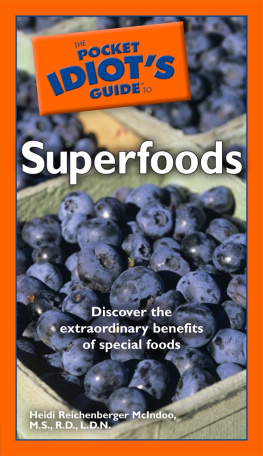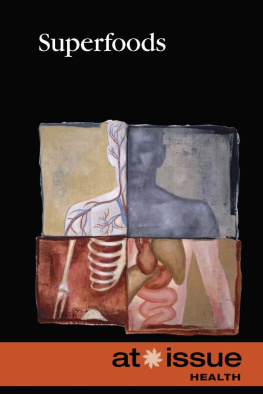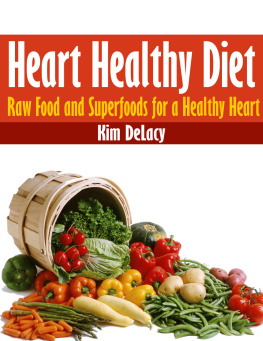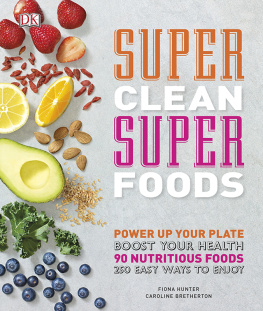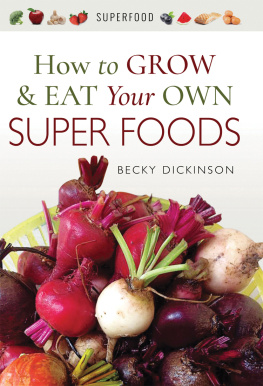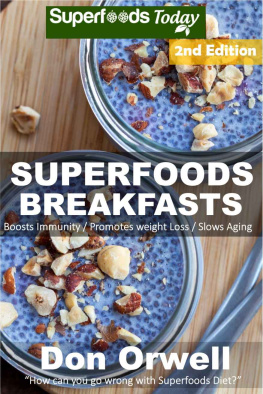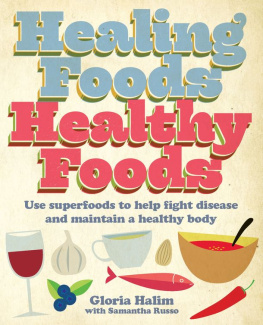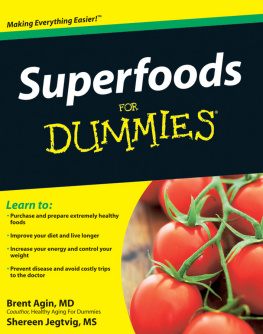Appendix A
Glossary
alpha-carotene A carotenoid and precursor to vitamin A.
amino acids The building blocks of which proteins are made.
anaphylaxis A severe and quickly occurring allergic reaction that can affect many parts of the body at once, including the skin, throat, and lungs. Symptoms include throat and tongue swelling, hives, and vomiting. It can cause difficulty breathing and a loss of consciousness, and could in rare instances cause death. Fortunately, it is rare and death occurs in only about 1 of every 2.5 million people per year.
antioxidants Substances that protect your bodys cells from the stress and damage done by free radicals. They may possibly reduce the risks of certain cancers and age-related diseases.
atherosclerosis A thickening and hardening of artery walls due to fat deposits on their lining. Its responsible for a great deal of coronary artery/ heart disease as well as strokes.
bacteria Microscopic living organisms that are practically everywhere: on the skin, in the intestines, air, soil, and more.
beta-carotene An antioxidant that is turned into vitamin A by the body. Among the several antioxidants that do this, beta-carotene is the easiest for the body to transform.
beta-cryptoxanthin Another of the carotenoids that the body converts to vitamin A.
carbohydrates The bodys main source of energy. They include sugars, starches, and fiber.
carotenoids Strong antioxidants that may lower the risk of heart disease, some types of cancer, age-related eye diseases, and lung diseases. They are responsible for the vibrant orange and red colors of many vegetables.
cataract A cloudy layer that forms over the eyes lens. It causes blurry vision and light sensitivity.
catechin A flavonoid and powerful antioxidant. Its major source in the diet is white and green tea.
chocolate liquor A liquid form of chocolate made by grinding the center of shelled, fermented, dried, and roasted cocoa beans. Once cooled, it is often molded into blocks of unsweetened chocolate. Contains no alcohol.
collagen A protein that helps build connective tissue in your body.
DASH diet Dietary Approaches to Stop Hypertension. Its an eating plan high in fruits, veggies, and low-fat dairy foods thats low in fat, saturated fat, and cholesterol.
Diabetes Mellitus A chronic disease characterized by high levels of glucose, or sugar, in the blood. Consistent blood sugar elevation can damage the kidneys and eyes, to name a few of the complications of diabetes. There are three main types: Type 1, Type 2, and gestational. References to diabetes in this book are regarding Type 2. This type of diabetes is usually diagnosed later in life, although more and more young people are developing it. A major risk factor of this type of diabetes is being overweight or obese.
Dietary Reference Intake (DRI) A newer version of the RDA. Developed in 1995 to provide more information, the DRIs include the RDA; Adequate Intake (AI) for nutrients, for which no RDA has been set; Tolerable Upper Intake Levels (UL), which are to prevent excessive intakes of nutrients that can do harm when consumed in too large amounts; and the Estimated Average Requirements (EAR), which are expected to meet the needs of half the people in the age group.
edamame Fresh green soybeans. They are high in protein and fiber. Often found in the freezer section of most grocery stores.
ellagic acid A polyphenol that has antioxidant properties and helps reduce the risk of certain cancers.
endothelium The inside lining of artery walls.
epicatechin A flavonoid found primarily in cocoa, red wine, and green tea. It improves blood flow and is therefore beneficial for maintaining heart health.
fibrin A protein that forms the basis of blood clots.
flash freezing A super-quick way of freezing food to maintain flavor and nutrition.
flavonoids The most powerful and abundant phytochemical group in your diet.
folate A B-vitamin that plays a big role in preventing birth defects and producing red blood cells. It is also called folic acid.
free radicals The by-product of the normal chemical reactions in the body. They damage cells and accelerate the development of age-related diseases and other diseases. Smoking, high exposure to pollution, and exposure to ultraviolet light (for example, sunbathing) increase free radical production.
fructose A sugar found naturally in fruits.
gastritis An inflammation of the stomach.
gastrointestinal tract Also called the digestive tract. Its made up of all of the organs involved in digestion, including the mouth, stomach, and intestines.
glucose The sugar that is the bodys main source of energy.
Glycemic Index (GI) A measure of how foods affect blood sugar levels and the bodys insulin response after eating.
hesperetin A flavonoid shown in animal studies to possess many health-promoting properties involving blood pressure, inflammation, and heart disease.
HDL High-density lipoprotein. Referred to as good cholesterol, HDL helps rid cholesterol from the body.
homocysteine An amino acid found in your blood. High levels of it coincide with a higher risk of heart disease.
indoles Anti-cancer phytochemicals found in cruciferous vegetables.
inflammatory bowel syndrome (IBS) An intestinal condition characterized by abdominal pain, bloating, and alternating constipation and diarrhea.
insoluble fiber A part of plant-based foods that cannot be digested. Its found in wheat bran, whole grains, fruits, and vegetables, and it increases the rate of food going through the intestines.
insulin The hormone responsible for regulating blood sugar by transporting the sugar from your blood to the various body tissues that need it for fuel.
iron A mineral that is essential to obtain from your diet. Its used to make hemoglobin, which is the component in blood that carries oxygen throughout the body to where its needed. Too much iron, however, can be dangerous, so dont go overboard with iron-rich foods or supplements.
isoflavones Compounds found in plants that faintly imitate the work of the reproductive hormone estrogen. They are also called phytoestrogens and are found in chickpeas and legumes, the soybean being the legume with the most.
isolated soy protein Created by removing most of the nonprotein components from soybeans, resulting in a product that is almost pure soy protein. Its used as an ingredient in foods such as energy bars to boost the nutritional quality.
isothiocyanates Anti-cancer phytochemicals found in cruciferous vegetables.
lactose The sugar in milk and milk products. It is broken down in the body by the enzyme lactase.
lactose intolerance A condition in which the body doesnt break down lactose due to low levels of lactase. This can result in stomach pain, bloating, gas, and/or diarrhea.
LDL Low-density lipoprotein. Often called bad cholesterol, its responsible for the plaque buildup that narrows arteries and could lead to a heart attack or stroke.
lignans Plant compounds that work as both phytoestrogens and antioxidants. These attributes are responsible for many health benefits.
lutein A carotenoid whose antioxidant powers work to benefit the eye and heart as well as help prevent cancer.
lycopene

